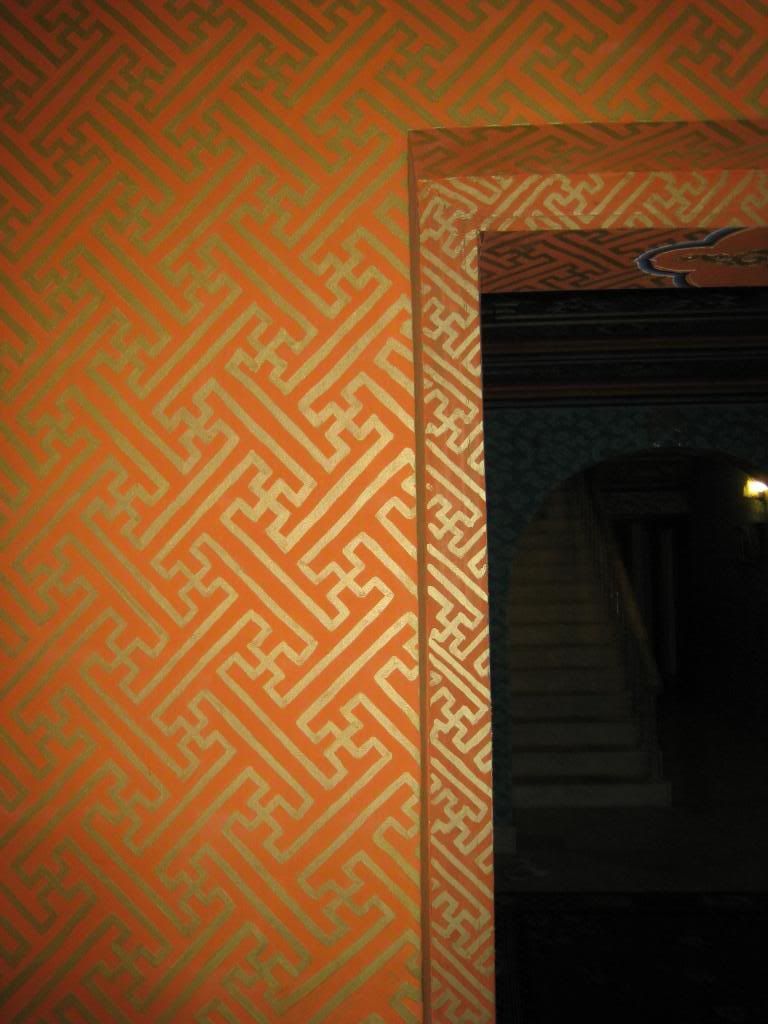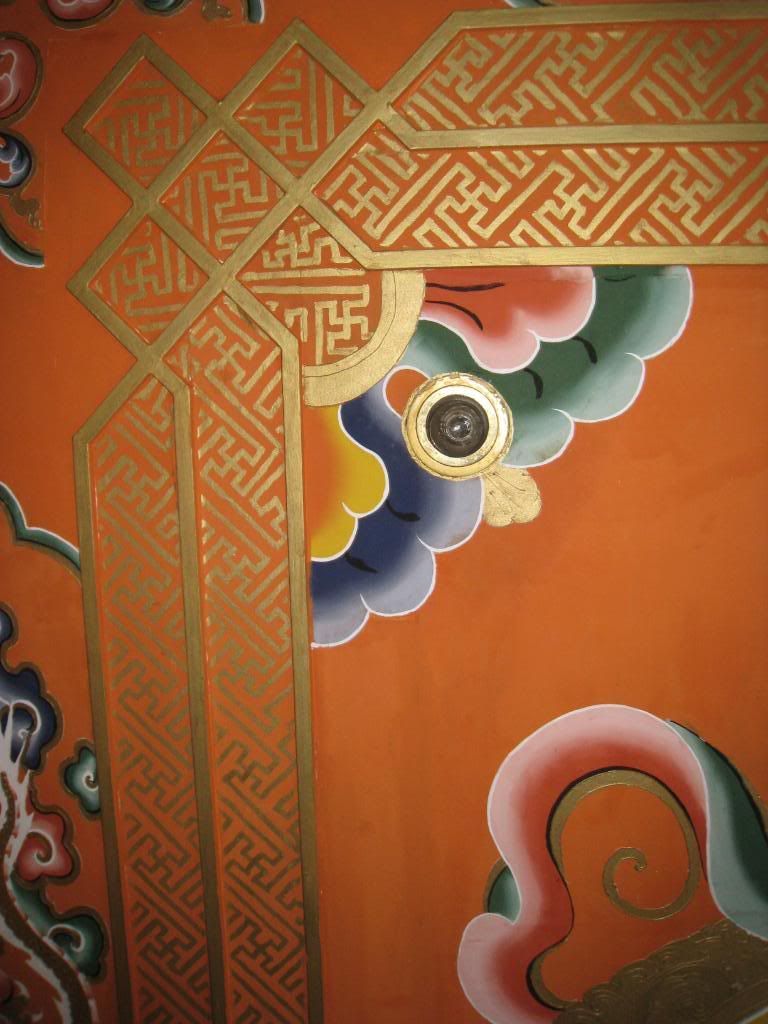
 |
|
|||||||
 |
|
|
Thread Tools | Search this Thread | Display Modes |
|
|
|
|
#1 |
|
Member
Join Date: Jul 2009
Posts: 16
|
Hello everybody, my first post on this fascinating forum. I'm very new to collecting so everything I read here is a learning experience. Anyways, saw this thread and thought I should add something to the discussion:
Swastikas painted on the walls and roof of a home in Bhutan - notice similarity with the design on the Japanese sword. I asked the house-lady and she told me the design, like many things in Bhutan, is Tibetan in origin. I know this thread is about swastikas on swords, but am posting these images below because of their similarity with the Japanese sword design.   Now, to keep the post fully relevant, check out this gubor (pommel) of an old Bhutanese patang that has been in my wife's family for several generations. This is the backside of the gubor, the front-side has pierced work more usually seen. In the background you can see more swastikas painted on the edges of the house's door area.  You will find swastikas in various designs all over the Himalayas, Tibet and South Asia as ancient Hindu and Buddhist religious symbols. Hope you find this interesting. |
|
|

|
|
|
#2 |
|
Arms Historian
Join Date: Dec 2004
Location: Route 66
Posts: 9,785
|
Thanks everybody for the great responses and excellent illustrations you have added to this thread!
This subject has been on my mind a long time, but never got around to addressing it, and you guys have really added outstanding perspective. Sta94, welcome to the forums, and very impressive entrance contribution. Thank you, and really look forward to your participation here!! All best regards, Jim |
|
|

|
|
|
#3 |
|
Member
Join Date: Nov 2020
Location: Toronto, Canada
Posts: 1
|
The twin dragon Chinese Ming dynasty HuShou (guard) has been imported/exported to Japan and modified with Kogai-hitsu-Ana (by-knife hole) to accomodate the custom of carrying a by-knife with the katana. The dragons are on the handle side, while the blade side shows the swastika/Wan (ten thousand character). If it weren't for the seppa/washer of the sword, all the swastika false-damascening would be rubbed off. (this is from my own collection)
The Korean Hwando has Chinese and Japanese elements. Close inspection of the pommel shows the swastika/Wan character pattern, also applied by false-damascening technique. (this was found on the internet) |
|
|

|
|
|
#4 |
|
Member
Join Date: Jan 2011
Posts: 1,053
|
Article.....
https://www.bbc.co.uk/news/magazine-29644591 A quote "Single swastikas began to appear in the Neolithic Vinca culture across south-eastern Europe around 7,000 years ago. But it's in the Bronze Age that they became more widespread across the whole of Europe." |
|
|

|
 |
|
|